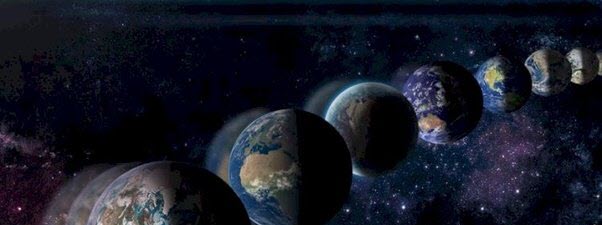Gas Station
Everything is different, yet, everything is the same.
Alien and Familiar
The Breach opened to a baking desert. A cracked ashphalt highway ran for a mile or so east and west of the breach point. It connected, via a 1/4 mile of side road, to a gas station basically identical to any of thousands in baseline America in the 1950s. It was long abandoned, worn, and weathered, anything of value stripped out. Based on what remained of the fixtures, there was a soda machine (faded and corroded) shelves that probably held snacks and utility items, a spinner rack for magazines. There was no indication of other construction; the road became progressively more worn until any sign it existed was gone. Short range drones picked up nothing within a few miles, but also no traces of radioactivity or plague that might have wiped out the population. The team was planning to note this as probably a minor parallel destined for limited exploration by completionists sometime in the future, when the magazine was found. Wedged under the remains of the counter, it had suffered less exposure to the elements and was mostly intact. That's when the boredom turned into confusion. It appeared to be a typical weekly (though that was a guess) general interest news magazine, akin to "Time" or "Newsweek". The layout, columns, and overall style were very 1950s. The photographs were mostly black and white, a few color; the same for advertising. The clothing, items such as watches and cars, and other cultural indicators were about 95% identical to the United States in the mid-1950s. The writing, however, was incomprehensible. It has been commonly described as a mixture of cuneiform and Mayan, though neither is actually the writing used. It seems to use a mix of syllabic and symbolic characters, much like Japanese. More details emerged as the initially-bored team began digging deeper. Analysis of the gas pumps gave indications of two counting systems, one base-10, one a seemingly arbitrary system implemented through very complex gearing. Based on how they were interconnected, it was determined the second related to currency, which used an odd system of scaling where 11 of the lowest unit equalled one of the next, and five of those equalled one of the next, and finally 8 of those equalled one of the next, which could go as 20. There is speculation that was due to expected value and limited gear space, rather than it being the end of the system. The people pictured in the magazine wore clothing very similar, but not identical, to that common in Western nations in the late 1950s, but the majority were of an indeterminate ethnicity, blending features from several Prime ethnic groups. A smaller number of people pictured were of different, but still unique, appearances. Sociologists have tried to speculate, based on clothing and other signifiers, which of these were of minority groups in the nation of publication and which were of other nations with different dominant groups. (These were very hesitant determinations; after all, the article might be about the treatment of minorities in some foreign land.) Based on the numbering system, the magazine was published in the eleventh something of the 435th something. The ordering is based on the '435' being repeated several times, and sometines 434 or 432, while other numbers structured similarly varied more. At a guess, they had at least 26 "days" and 13 "months", though this might just mean no article covered events on the 27th or the 14th. Social divisions, inferred from clothing and advertising, seemed identical to that of mid-20th century America, as well. Image recognition was able to place some photographs by natural formations, but not others. Televisions were advertised, and one advertisement for what looked like a radio was accompanied by symbols not seen elsewhere, which are believed to be musical notes. The damage to the station, due apparently to time and weather, indicates it was abandoned roughly 50 years earlier. There is a strong interest in exploring further in the belief there could easily be a thriving civilization a short drive away. There is a proposal to duplicate one of the vehicles shown in the advertisements to use as an exploratory craft, based on the assumption that if the culture is so similar to that of Prime despite the different languages and history, there'd be some people who liked old cars, and once some idea of 'current' fashions and technologies was had, a more subtle investigation could begin. This is countered by the concern there's no atmospheric indication of an active, thriving, post-industrial society; the explorers could be heading into an apocalypse, which might or might not still be ongoing.Best estimates of the weathering and wear on the gas station are that it had been abandoned for 30 years or so, so if there is a surviving civilization, and it progressed along the same lines as Baseline, a mid-1980s level of technology and culture would be expected.



Comments